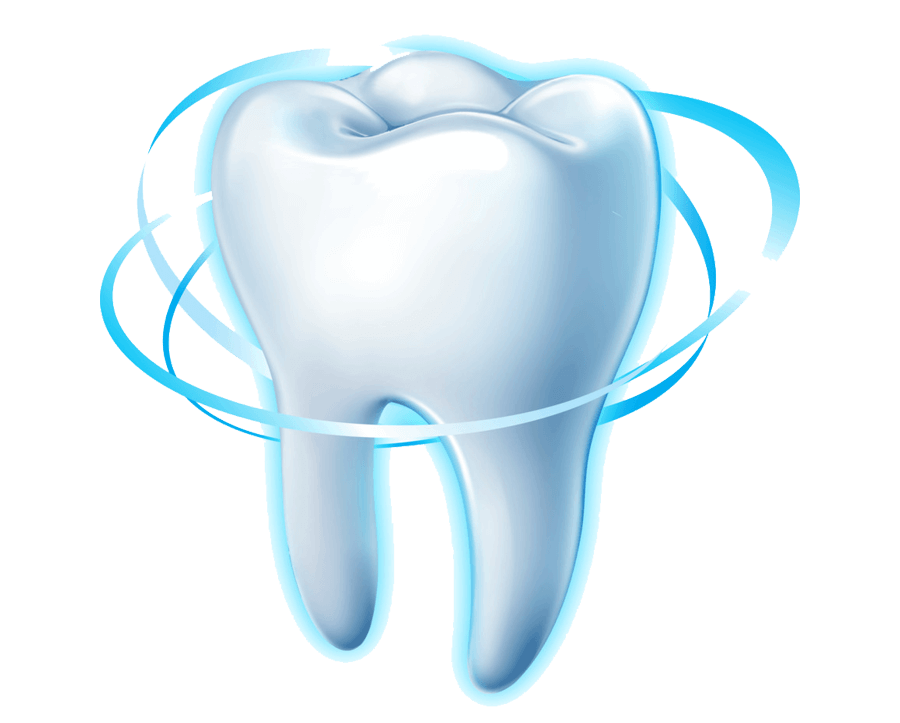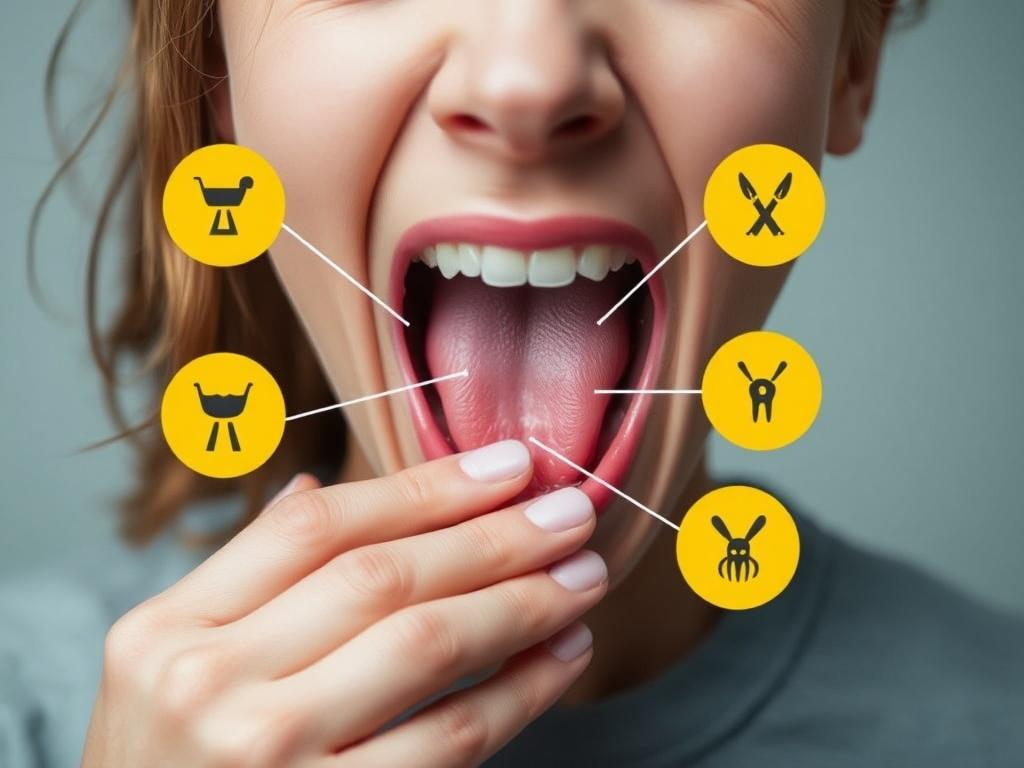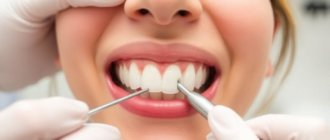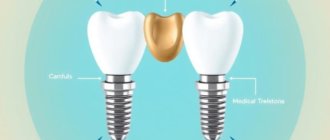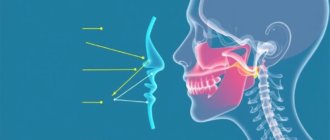Bad breath, or Mundgeruch (Halitosis), can be more than an awkward moment—it can be a signal that something needs attention in your mouth or body. You might have experienced that uneasy thought before stepping into an elevator or leaned away when someone gets too close, wondering where that smell is coming from. As a dentist looking at bad breath, you quickly learn that it’s rarely a single issue and often a combination of factors that create persistent halitosis. In this long-form guide, I’ll walk you through the dental perspective on halitosis: how we diagnose it, the most common dental causes, how non-dental issues play a role, practical treatments, and daily habits that make a real difference. The goal is simple—help you understand what’s normal, what’s a sign of trouble, and what you can do about it.
Содержание
- 1 Understanding Mundgeruch (Halitosis): More Than Just Smell
- 2 How Dentists Diagnose Halitosis
- 3 Dental Causes of Halitosis: The Usual Suspects
- 4 Non-dental Oral and Systemic Causes
- 5 Risk Factors That Make Dental Halitosis Worse
- 6 Diagnostic Tools and Tests from a Dental Perspective
- 7 Treatment Strategies: Practical Dental Approaches
- 8 Prevention: Daily Habits and Professional Care
- 9 When to Refer Beyond Dentistry
- 10 Common Myths and Misconceptions
- 11 Communication and Sensitivity: How Dentists Should Talk About Halitosis
- 12 Practical Checklist for Patients Dealing with Mundgeruch (Halitosis)
- 13 What to Expect After Starting Treatment
- 14 Final Thoughts on the Dental Role in Managing Halitosis
- 15 Conclusion
Understanding Mundgeruch (Halitosis): More Than Just Smell
Halitosis is the clinical term for bad breath that is noticeable and chronic. While occasional bad breath after garlic or coffee is normal, true halitosis persists and can affect someone’s social life and self-esteem. It’s important to separate transient odors from chronic ones. Transient odors usually have an obvious trigger—certain foods, temporary dry mouth from dehydration, or morning breath. Chronic halitosis tends to come from ongoing issues such as dental disease, bacterial biofilms, or systemic health problems.
From a dental perspective, we focus on the mouth as the primary source. The oral cavity offers an ideal environment for bacteria to thrive: warm, moist, and filled with food residues and tissues where bacteria can metabolize proteins into foul-smelling compounds. These bacteria produce volatile sulfur compounds (VSCs) like hydrogen sulfide and methyl mercaptan, which are major contributors to the characteristic offensive odor. The more you understand where these compounds are likely coming from, the easier it is to tackle the problem effectively.
How Dentists Diagnose Halitosis
Diagnosing halitosis is both art and science. First, we take a careful history and ask specific questions. When does the odor occur? Is it constant or intermittent? Are there associated symptoms like dry mouth, sore gums, or tooth pain? Do other people confirm the problem, or is it suspected by the patient alone? This background helps differentiate true halitosis from halitophobia (a fear of having bad breath) and guides the physical exam.
A thorough oral exam follows. Dentists look for visible sources such as tongue coating, periodontal pockets, decayed teeth, failing restorations, or infected root canals. We also examine oral appliances, crowns, bridges, and dentures for trapped food or poor fit. There are objective tools too: specialized devices like a halimeter measure VSC levels, though they are not perfect and can be influenced by diet and smoking. Culture tests, gas chromatography, and microbiological assays are used in research or complex cases. Ultimately, clinical assessment paired with problem-solving tends to resolve most cases.
Clinical Examination
The clinical exam focuses on tissues and structures that harbour odor-producing bacteria. Dentists inspect the tongue, especially the posterior dorsum where coating often accumulates. We measure gum pockets and check for bleeding or pus, signs of active periodontal infection. Teeth are tested for deep caries and cracks that might hide decay or bacterial infiltration. Prostheses and orthodontic appliances are assessed for cleanliness and fit. Saliva flow is checked, since dry mouth can dramatically change bacterial balance.
Sensory and Instrumental Tests
Smell tests performed by trained clinicians can be surprisingly reliable; this is called organoleptic scoring. Instrumental measurement of volatile sulfur compounds with a halimeter helps provide an objective number, but it isn’t diagnostic on its own. More advanced tests such as gas chromatography can identify specific malodorous compounds and are used when standard treatment fails. These tools complement the physical exam rather than replace it.
Medical and Dental History
A detailed history collects information about medications, chronic illnesses, ENT issues, and gastrointestinal symptoms. Many medications cause dry mouth, oral candidiasis, or changes in saliva composition that encourage malodor. Smoking, alcohol consumption, and diet all influence breath quality. Combining history and exam helps us chart the diagnostic path—when to treat as dental halitosis and when to refer to ENT or medical colleagues.
Dental Causes of Halitosis: The Usual Suspects
In dental practice, several recurring conditions account for most cases of halitosis. Below is a concise table summarizing these dental causes, how they create bad breath, common clinical signs, and typical dental treatments.
| Dental Cause | How it Produces Odor | Common Signs | Typical Dental Treatment |
|---|---|---|---|
| Tongue coating (biofilm) | Bacteria on tongue break down proteins into VSCs | White/yellow coating, especially posterior tongue | Tongue cleaning, antimicrobial rinses, hygiene instruction |
| Periodontal disease | Deep pockets harbour anaerobes that produce VSCs and foul odors | Bleeding gums, pocketing, loose teeth, pus | Scaling/root planing, periodontal therapy, possible surgery |
| Dental caries & infected teeth | Decay and necrotic tissue allow bacterial breakdown | Tooth pain, visible cavitation, swellings | Restorations, root canal therapy, extraction |
| Dry mouth (xerostomia) | Low saliva means less cleansing and oxygen; bacteria proliferate | Sticky mouth, frequent thirst, fissured tongue | Treat underlying cause, saliva stimulants, saliva substitutes |
| Prostheses & appliances | Food and plaque trapped under appliances promote bacterial growth | Bad odor, loose-fitting appliances, tissue irritation | Deep cleaning, relining, repair or replacement |
| Poor restorations & subgingival margins | Gaps and rough surfaces trap bacteria and debris | Recurrent decay, sensitivity, unexplained odor | Replace/repair restorations, improve margins |
Tongue Coating and Biofilm
If there’s one underestimated cause of mouth odor, it’s the tongue. The tongue’s surface is textured and can trap dead cells, food particles, and bacteria, forming a thick biofilm. Anaerobic bacteria there are highly effective at producing VSCs. Tongue coating tends to be worse in the morning or during dry mouth. Fortunately, this is also one of the most treatable sources; proper mechanical cleaning of the tongue with a scraper or brush reduces the bacterial load and can dramatically improve breath. Antimicrobial mouthrinses can help, but mechanical removal is key.
Periodontal Disease (Gum Disease)
Periodontal disease is a major culprit in persistent halitosis. As gum disease progresses, pockets form between the periodontal tissue and tooth surfaces. These pockets create anaerobic environments where odor-producing bacteria flourish. Signs include gum bleeding, recession, pocketing, halitosis, and sometimes pus. Treatment involves scaling and root planing to disrupt and remove the biofilm, followed by ongoing periodontal maintenance. In advanced cases, surgery may be necessary to reduce pocket depths. Addressing periodontal disease often leads to noticeable improvements in breath within a few weeks.
Dental Caries and Infected Teeth
Cavities can hide decaying tissue and bacterial colonies that produce malodor. A deep carious lesion or a necrotic pulp (dead nerve) can create a persistent source of foul smell. Root canal infections are particularly problematic because the necrotic tissue nourishes anaerobes. Treatment requires definitive dental care—restorations, root canal therapy, or extraction—to eliminate the source. Leaving infected teeth untreated usually perpetuates the problem and may lead to systemic spread or abscesses.
Dry Mouth (Xerostomia)
Saliva is the mouth’s natural rinse; it flushes debris, buffers acids, and provides oxygen—conditions unfavorable for anaerobes. When saliva flow decreases, often from medications, systemic diseases (like Sjögren’s), radiation therapy, or dehydration, bacterial balance shifts. Dry mouth is a multiplier, making any underlying dental condition more likely to cause halitosis. Managing xerostomia—through salivary stimulants, substitutes, hydration, and reviewing medications—can reduce bad breath significantly.
Appliances, Prostheses and Food Traps
Dentures, partials, orthodontic appliances, and fixed dental work can trap food and plaque if not cleaned well. Poor-fitting or old prostheses create niches for bacteria. For denture wearers, cleaning the removable appliance and the tissues underneath is essential daily. For fixed prostheses, attention to flossing techniques and interdental cleaning becomes even more crucial. Repairing or replacing poorly fitting appliances eliminates persistent reservoirs of bacteria.
Restorative Failures and Hidden Pockets
Overhanging restorations, open margins, cracked teeth, and recurrent decay offer hiding places for bacteria. Patients might have no pain but experience persistent malodor. Dentists must assess restorations and periodontal health; sometimes, an apparently small defect is the prolonged source of halitosis. Replacing or adjusting restorations and correcting marginal defects can stop the problem.
Non-dental Oral and Systemic Causes
Not all halitosis comes from the teeth and gums. Dentists work closely with ENT specialists and physicians because many conditions outside the oral cavity can produce bad breath or alter the bacterial environment.
ENT and Respiratory Causes
Postnasal drip from chronic sinusitis, tonsillitis, or adenoid problems can contribute to bad breath. Tonsil crypts can harbor debris and bacteria (tonsilloliths), producing a foul odor. Chronic bronchitis and lung infections also create malodorous breath due to microbial activity and sputum. Dentists often coordinate with ENT specialists to identify or rule out these sources.
Gastrointestinal Causes
Although less common, certain gastrointestinal conditions can affect breath quality. Severe reflux or gastroesophageal reflux disease (GERD) may allow stomach contents to reach the oral cavity, producing a sour or acidic odor. Helicobacter pylori infections have been discussed in connection with halitosis, but evidence is mixed; still, persistent bad breath despite optimal oral care sometimes warrants a gastroenterology referral for evaluation.
Metabolic and Systemic Conditions
Certain metabolic disorders produce characteristic breath odors. Diabetic ketoacidosis imparts a fruity or acetone smell; hepatic failure may cause fetor hepaticus (musty breath), and renal failure can produce an ammonia-like odor. These are serious systemic signs and require urgent medical evaluation. Dentists should be alert if breath odor is accompanied by other systemic symptoms such as weight loss, fatigue, or changes in consciousness.
Medications and Lifestyle Factors
Many medications reduce saliva flow or change mouth flora, increasing the risk of halitosis. Smoking is a major contributor because it directly causes unpleasant odor and reduces salivary flow; tobacco also promotes periodontal disease. Dietary habits—high protein diets, alcohol consumption, and frequent consumption of strong-smelling foods—also affect breath. Addressing lifestyle factors is part of a comprehensive approach.
Risk Factors That Make Dental Halitosis Worse
Many everyday factors amplify dental halitosis. Here are common risk enhancers:
- Poor oral hygiene or inconsistent dental visits
- Smoking and tobacco use
- High-sugar or high-protein diets that feed oral bacteria
- Alcohol consumption and dehydration
- Medications that reduce salivary flow
- Diabetes and other chronic systemic diseases
- Older age, which can be associated with dry mouth and periodontal disease
- Poorly fitted dental appliances
Each of these factors makes it easier for odor-producing bacteria to thrive. Changing even a few can produce noticeable improvement.
Diagnostic Tools and Tests from a Dental Perspective
Dentists have a toolbox of approaches for diagnosing halitosis, and most begin with simple, low-cost steps:
- Detailed history and organoleptic assessment (professional smell test).
- Clinical oral examination for tongue coating, periodontal disease, caries, prosthetic issues, and dry mouth.
- Salivary flow measurement and assessment of oral mucosa for signs of fungal infection.
- Use of VSC-measuring devices (halimeter) for objective monitoring.
- Microbiological tests or referral for advanced testing if standard treatments fail.
A practical diagnostic plan starts with ruling out dental causes because these are the most common and most amenable to treatment in the dental office. If dental sources are treated and halitosis persists, referrals to ENT, gastroenterology, or internal medicine may be necessary.
Treatment Strategies: Practical Dental Approaches
Treatment must be targeted. Simply using breath mints or generic mouthwash can mask odors but rarely solves chronic halitosis. Here’s a structured way dentists and patients can approach treatment.
In-Office Dental Treatments
- Professional cleaning (prophylaxis) to remove plaque and calculus that harbor bacteria.
- Scaling and root planing for periodontal disease and maintenance therapy thereafter.
- Restoration or replacement of defective fillings, crowns, and bridges.
- Root canal treatment or extraction of necrotic or non-restorable teeth.
- Management of oral infections, including antifungal therapy for candidiasis.
- Adjustment, relining, or replacement of ill-fitting dentures and appliances.
At-Home Measures Recommended by Dentists
Most effective halitosis management happens at home. Dentists teach and reinforce these habits:
- Brush teeth twice daily and floss once daily to remove plaque and food debris.
- Clean the tongue gently each morning and as needed with a tongue scraper or brush.
- Use interdental brushes or floss to clean between teeth and under bridges.
- Rinse with antimicrobial mouthwash as appropriate (chlorhexidine for short-term use or cetylpyridinium chloride formulas for maintenance).
- Stay hydrated and manage dry mouth with saliva stimulants or substitutes if indicated.
- Quit smoking and reduce alcohol intake.
- Maintain regular dental visits for periodontal maintenance and occlusal/prosthetic checks.
Adjunctive and Targeted Therapies
When mechanical cleaning and standard treatments are not enough, dentists might recommend:
- Topical antimicrobials or antiseptic gels placed in periodontal pockets.
- Systemic antibiotics in specific, acute situations where infection demands it (used cautiously).
- Probiotics aimed at restoring beneficial oral flora—evidence is emerging but promising.
- Laser therapy for periodontal pathogens in certain practices.
Prevention: Daily Habits and Professional Care
0
Preventing dental halitosis is largely about habits and regular care. Prevention tips that actually work include:
- Consistent oral hygiene: brushing, flossing, and tongue cleaning each day.
- Regular dental check-ups and cleanings every 3–6 months for high-risk patients.
- Staying hydrated and managing conditions that cause dry mouth.
- A balanced diet with limited sugary snacks and attention to foods that promote bacterial growth.
- Proper care of dental appliances: remove dentures at night, clean them daily, and soak as recommended.
- Quit tobacco and moderate alcohol use.
- Communicate with your dentist about medications that might cause dry mouth and possible alternatives.
These preventive steps are simple but effective. In many cases, patients notice a marked reduction in odor within days to weeks when they adopt these measures and follow through with dental treatment plans.
When to Refer Beyond Dentistry
If dental evaluation and comprehensive oral treatment fail to resolve halitosis, it’s time to look outward. Referrals typically occur when:
- ENT causes are suspected—chronic sinusitis, tonsillitis, or anatomic issues that trap debris.
- Gastrointestinal symptoms accompany the breath issue—persistent reflux, severe belching, or unexplained abdominal pain.
- Systemic disease is suspected—diabetes with poor control, suspected renal or hepatic disease, or metabolic disorders.
- Symptoms suggest a psychiatric component (halitophobia) where perceived bad breath isn’t confirmed by objective testing.
Interdisciplinary collaboration between dentists, ENT specialists, gastroenterologists, and primary care physicians provides the best pathway for stubborn cases.
Common Myths and Misconceptions
Bad breath is surrounded by myths. Let’s dispel the most common ones:
- Myth: Gum disease is the only dental cause. Reality: It’s a major cause but others—tongue coating, decay, appliances—are equally important.
- Myth: Mouthwash cures chronic halitosis. Reality: Some mouthwashes help temporarily, but they don’t remove the underlying source long-term.
- Myth: If others don’t notice it, I don’t have halitosis. Reality: Self-assessment is unreliable; organoleptic testing by a clinician is more objective.
- Myth: Breath mints are enough. Reality: Mints cover odors briefly but don’t treat bacterial sources, and sugar mints can worsen the problem.
Patient Vignettes: Real-World Examples
Hearing real patient stories can make the clinical discussion more relatable. One patient had persistent halitosis despite daily brushing and mouthwash. On exam, a large tongue coating and poor interdental cleaning were evident. Tongue scraping, proper flossing instruction, and a short course of an antibacterial rinse reduced the odor substantially within two weeks. Another patient had chronic bad breath and multiple periods of dental neglect; the root cause was advanced periodontal disease with deep pockets. After scaling, root planing, and targeted periodontal care, the halitosis resolved gradually over a few months. A third patient insisted the problem came from the stomach; after normal dental evaluation, ENT referral found tonsilloliths which were treated and relieved the issue. These examples highlight the need for careful, stepwise evaluation.
Communication and Sensitivity: How Dentists Should Talk About Halitosis
Bad breath is a sensitive topic and can be embarrassing for patients. Dentists need empathy, clear communication, and practical guidance. Here are tips:
- Address the issue privately and matter-of-factly, emphasizing that halitosis is common and treatable.
- Use objective findings to guide the conversation—show patients the tongue coating, periodontal pockets, or dental defects.
- Provide a step-by-step plan: short-term steps (tongue cleaning, antimicrobial rinse), medium-term (cleaning, restorative care), and long-term maintenance.
- Encourage follow-up to monitor progress and adjust treatment as needed.
- Be mindful of cultural sensitivities around breath and personal hygiene.
A supportive approach helps patients commit to the behaviors and treatments that will actually solve the problem.
Practical Checklist for Patients Dealing with Mundgeruch (Halitosis)
Here’s a concise checklist you can use at home when addressing halitosis:
- Brush twice daily for two minutes using fluoride toothpaste.
- Floss once daily; use interdental brushes if spaces are large.
- Scrape your tongue every morning with a scraper or brush.
- Drink water regularly; avoid prolonged dry mouth.
- Quit smoking and limit alcohol.
- Clean dentures and appliances daily; remove them at night if appropriate.
- Schedule a dental visit if bad breath persists for more than two weeks despite good hygiene.
- Follow dentist’s recommendations regarding periodontal therapy or restorative care.
- Inform your dentist about all medications and systemic health issues.
What to Expect After Starting Treatment

Results vary by cause. Tongue cleaning often shows improvement within days. Treating periodontal disease generally reduces odor over weeks to months as pockets heal and bacterial load decreases. Dental restorations and root canals eliminate localized sources quickly, though healing and deodorization may take time. If systemic causes are involved, resolution depends on medical treatment success. Overall, with appropriate dental care combined with good home practices, most patients see meaningful improvement.
Final Thoughts on the Dental Role in Managing Halitosis
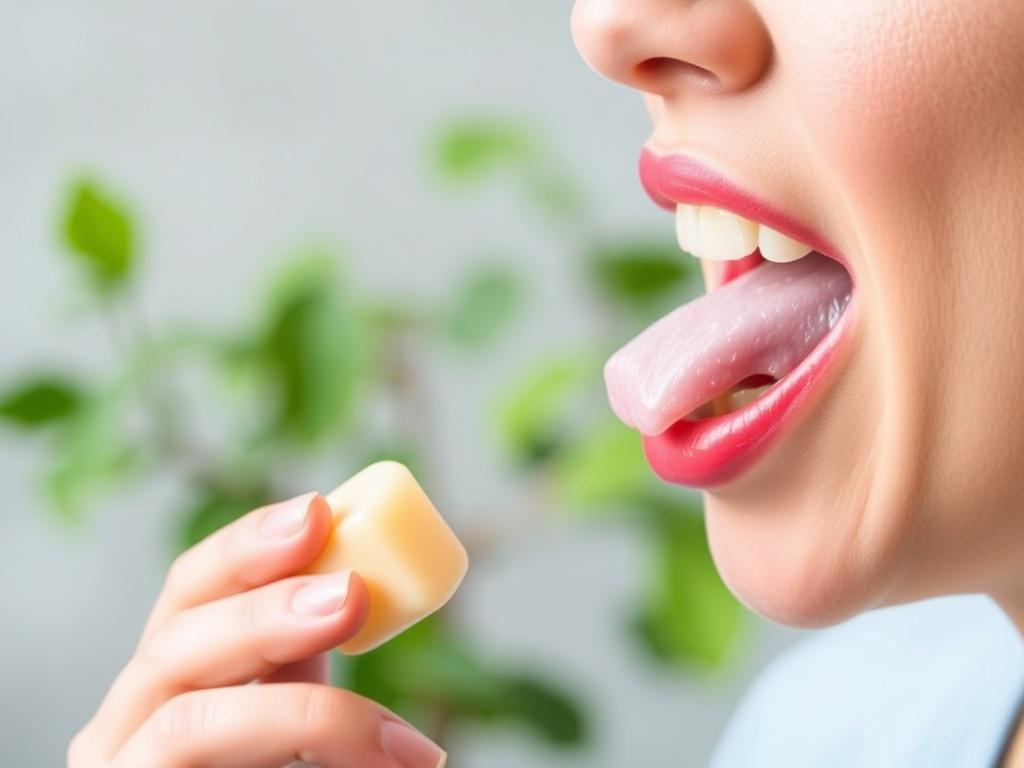
Dentists are frontline clinicians for most cases of halitosis because most odor-producing sources sit in the mouth. A careful, compassionate, and systematic approach identifies the problem, treats it, and teaches patients how to prevent recurrence. Instead of hiding the issue with breath mints or temporary fixes, addressing the root causes—tongue biofilm, gum disease, decay, dry mouth, or prosthetic problems—offers long-term solutions. Collaboration with medical and ENT colleagues is important when dental treatments do not fully resolve the issue, ensuring that you get comprehensive care.
Conclusion
Halitosis, or Mundgeruch, is common but often solvable; from a dental perspective, the most frequent culprits are tongue coating, periodontal disease, decay, dry mouth, and appliance-related problems—each of which can be diagnosed and treated with careful examination, targeted dental therapy, and consistent daily oral care, while persistent or atypical cases may need collaboration with medical or ENT specialists to address non-dental sources.
